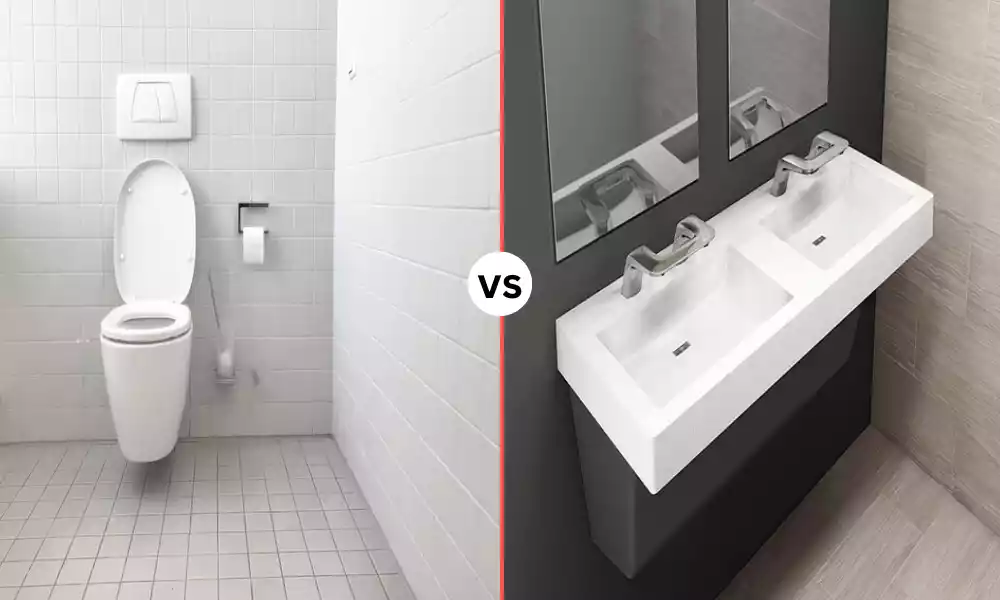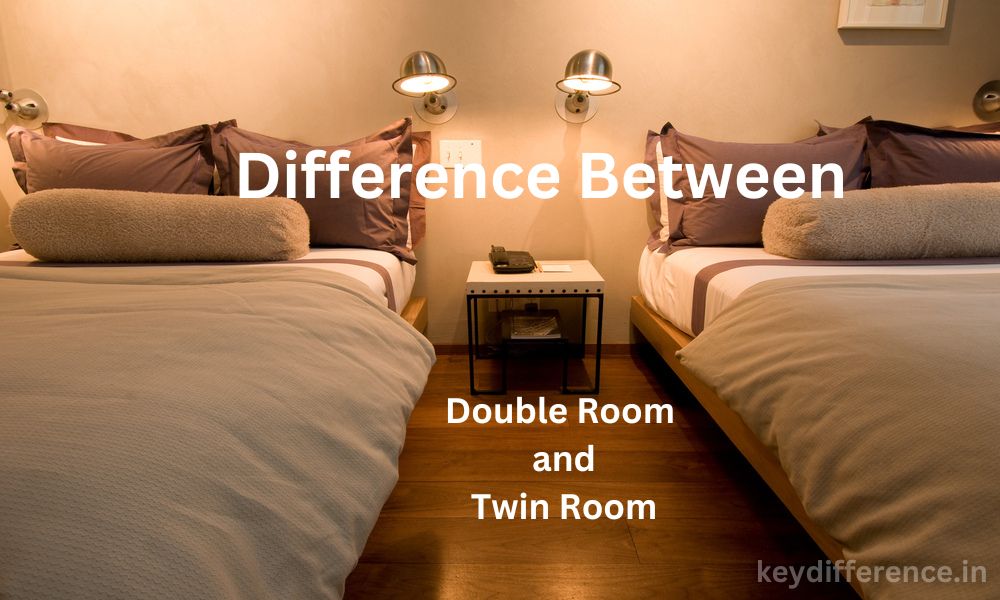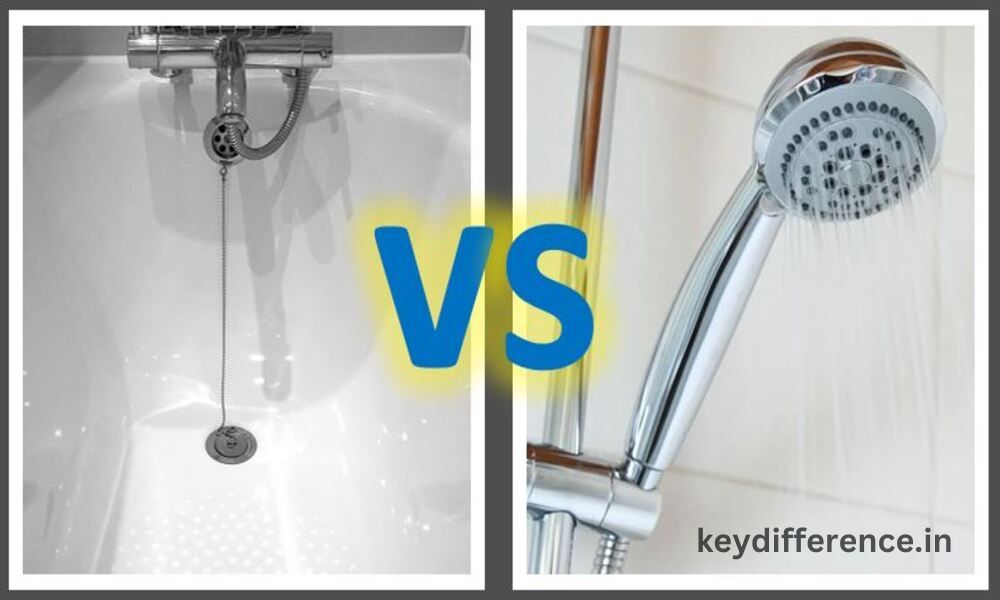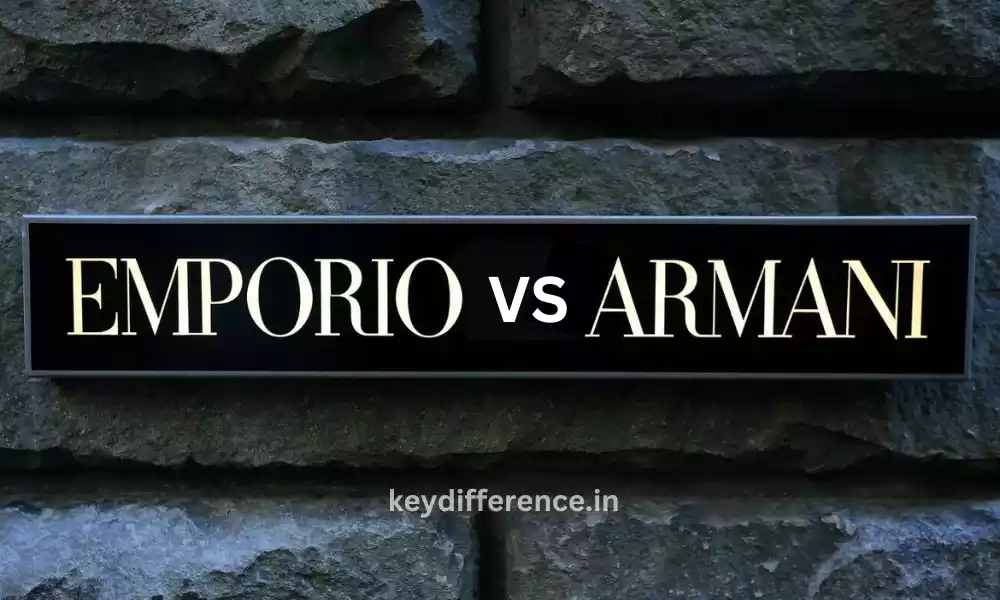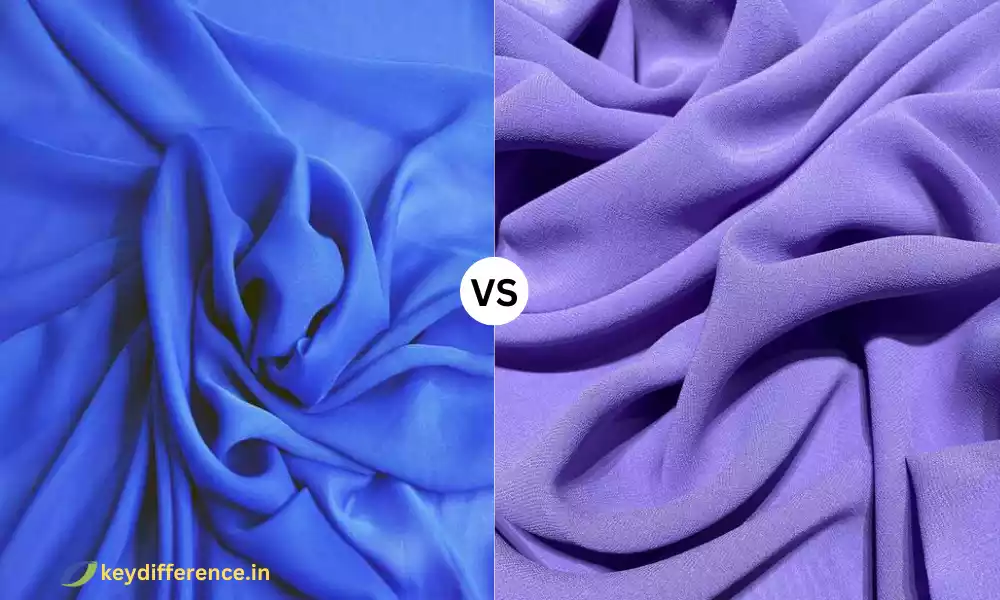Georgette and Chiffon are elegant and versatile fabrics commonly employed in interior and fashion. Although they appear to be identical at first glance they are distinct in terms of texture, composition, and draping.
Understanding the differences is vital to making informed decisions in both practical and creative applications. We’ll look at the distinctions between chiffon and georgette making it easier to choose the best option to meet your requirements.
Definition of Georgette
Georgette is a light semi-sheer fabric identified by its slightly rough or pebbled texture. It is composed of synthetic fibers, silk, or a combination of both and is renowned for its silky and soft drape.
Georgette fabric is frequently employed in the design of delicate and airy clothing such as blouses, dresses, or scarves as well as eveningwear because of its elegant appearance and the ability to create gorgeous pleats and folds. The delicate and elegant nature of the fabric is a favorite option for semi-formal and formal clothes.
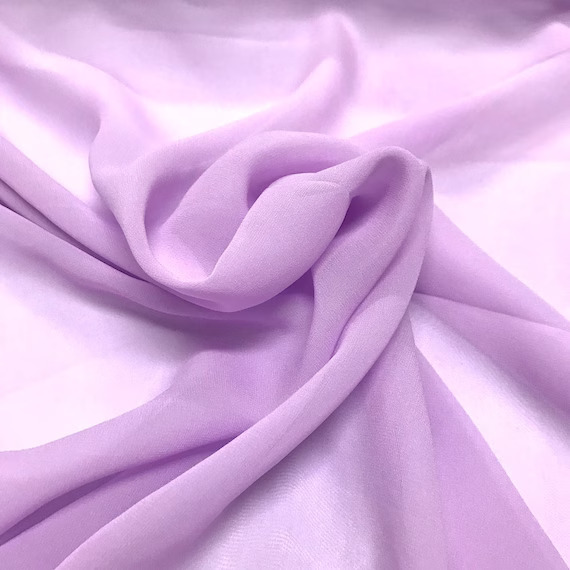
Definition of Chiffon
Chiffon is a light, transparent fabric that is known for its soft and beautiful appearance. It is usually made of silk, however, synthetic versions are also available and are distinguished by its tightly wound yarns. Chiffon is a soft shimmer, and a soft, flowing drape.
This makes it a favorite option for romantic and elegant garments and accessories such as evening gowns, and bridal attire as well as lingerie, scarves, and scarves. The sheer, translucent nature provides it with a delicate and airy look, which is often employed to add a touch more sophistication to a variety of fashion-forward creations.
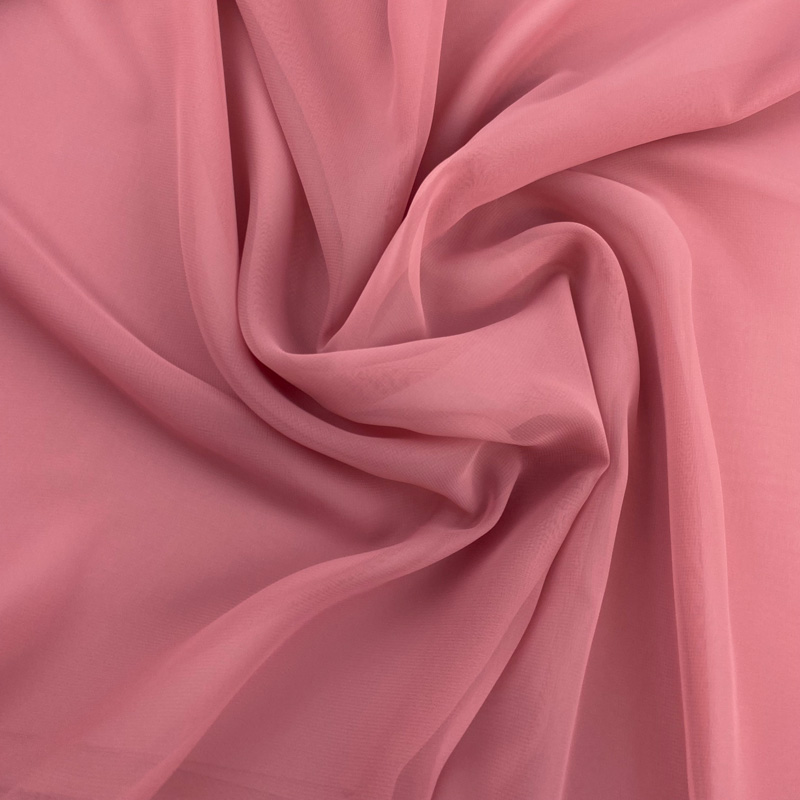
Importance of Understanding the Differences
Knowing the difference between chiffon and georgette is vital for many reasons:
- Fabric selection: Selecting the appropriate fabric is crucial when designing a fashion or sewing project. Chiffon and Georgette are distinct in their properties, making them ideal for various types of clothes and uses. Knowing these different properties helps you ensure that the fabric you choose matches the desired design and the intended purpose.
- Comfort and wearability: Fabric composition texture, weight, and composition directly affect comfort when wearing a dress. Knowing these factors will allow you to choose the fabric that is comfortable against your skin and is appropriate for the weather or event. For instance, chiffon might be better suited to an airy summer dress however, georgette is a better choice for a winter-themed blouse.
- Styling and Draping: The way a fabric drapes or flows has a significant impact on the overall appearance of an item. Chiffon and Georgette both are distinct in their draping qualities and understanding these distinctions aids in achieving the desired look and shape. Designers can make use of this information to design clothing that has a specific design and style.
- Durability and maintenance: Different fabrics come with various levels of durability and needs. Understanding how chiffon and chiffon are different in regard to maintenance will help designers and customers make educated decisions on how much attention and care an item needs as time passes.
- Cost considerations: Georgette and chiffon are priced differently according to the type and quality of fabric. Knowing these price variations allows people to plan their budgets for projects, or to make informed buying choices when purchasing clothing made of these materials.
- Sustainability: Understanding the components that are used in chiffon and georgette production is also crucial for those who are concerned about sustainability. Understanding whether a fabric is made of synthetic or natural fibers can affect eco-friendly choices for textiles.
- Flexibility in Design and Fashion: Designers and fashion fans can make use of the unique characteristics of chiffon and georgette to their advantage. Knowing the characteristics of these fabrics allows for creative expression as well as the possibility of experimenting with a variety of types of textures, styles as well and design components.
- Home decor as well as Interior Design: Georgette and chiffon aren’t restricted to fashion. They can also be used for interior decor, like drapes and furniture. Knowing the differences will help both interior and homeowners choose the appropriate fabric for their particular space or design.
Understanding the difference between chiffon and georgette is crucial to making educated choices in various areas of fashion, design, and everyday life. It is essential to ensure that you attain the desired appearance, comfort, and practicality according to your needs.
Comparison Table of Georgette and Chiffon
Here’s a comparison table highlighting the key differences between georgette and chiffon:
| Characteristic | Georgette | Chiffon |
|---|---|---|
| Composition | Silk, synthetic fibers, or a blend | Silk, synthetic fibers, or a blend |
| Texture | Slightly crinkled or pebbled surface | Fine, tightly twisted yarns |
| Weight | Heavier and denser compared to chiffon | Light and airy |
| Draping and Flow | Soft and flowing drape | Delicate, ethereal, and airy drape |
| Transparency and Sheerness | Semi-sheer with a subtle opacity | Sheer and translucent |
| Durability | More durable and less prone to snagging | Delicate and prone to snagging or tearing |
| Maintenance | Requires gentle care and handwashing | Requires delicate handling and care |
| Common Uses | Dresses, blouses, scarves, eveningwear | Evening gowns, bridal wear, lingerie, scarves |
| Comfort | Comfortable against the skin | Lightweight and comfortable, but can be sheer |
| Price Range | Moderate to high | Moderate to high, varies with quality |
| Availability | Widely available in various colors and prints | Readily available in fashion markets |
Remember that these characteristics may vary based on the specific type and quality of georgette and chiffon fabrics. It’s important to consider these differences when selecting the fabric for your projects or fashion choices.
Which is better georgette or chiffon?
The decision between georgette and chiffon is based on your personal requirements and preferences since each comes with its own particular set of features and advantages. Each is not “better” than the other however it’s about picking the one that best suits your specific project or result.
There are several factors to think about in making your choice:
- The Drape as well as the Flow: Chiffon is known for its soft, delicate drape and affluent flow, making it a great option for silky, flowing clothes like evening gowns and scarves. Georgette although still flowing, however, has a more dense drape that could be preferred for certain styles.
- Transparency: Chiffon is generally more translucent and sheer compared to georgette. If you are looking for an ethereal or see-through look on your clothing then chiffon is the best choice.
- Comfort: Georgette is often thought to be more comfortable against the skin because of its thicker weave. It’s a good choice if you’re seeking the most comfort when wearing clothing.
- Durability: Georgette is typically more durable and less susceptible to being snagged compared to Chiffon. If your clothes are exposed to more damage and wear, a georgette may be the best option.
- Maintenance: Both fabrics require careful care, however, georgette is more accommodating in regards to handling and washing. Chiffon requires extra care to avoid snagging or tearing.
- Style and aesthetics: Take into consideration the style and appearance you’re trying to achieve. Chiffon is typically associated with romance and elegance and is a common option for wedding wear and formal wear. Georgette is more adaptable and can be used in a broader range of fashion-related applications.
- Climate and Event: Take into consideration the weather and the event that you’re planning on wearing the outfit. Chiffon’s light and breathable properties make it ideal for hot conditions, whereas georgette’s more dense texture may be ideal in cooler temperatures.
- Budget: The price of Georgette and Chiffon will vary in price based on the type and quality. Be aware of your budget when deciding on your selection.
In the end, neither georgette nor chiffon is a universally superior choice over either. It is based on your personal needs and characteristics that match your vision or style. Each of the fabrics has its distinctive characteristics as well. The “better” choice is the one that best suits your needs and tastes the best.
Is georgette heavier than chiffon?
Georgette is usually heavier than the chiffon. Georgette is popular for its slightly drier weave and texture when compared with Chiffon, which is light and breathable. The difference in weight results from the method these fabrics are made as well as the yarns that are employed.
Because of its greater weight, the fabric has more bulk and is less transparent than Chiffon. This feature can impact the drape, appearance, and overall feel of clothes that are made of these fabrics.
Georgette’s texture and weight make it a favorite option for clothes that need some structure and transparency, while Chiffon’s light and sheer texture is typically used for its flowing and delicate designs.
What are the disadvantages of georgette?
Georgette is a gorgeous and versatile fabric, however, it has some drawbacks that you need to be aware of before deciding to use it for your next project.
These are the disadvantages:
- Predisposed to wrinkles: Georgette has a slightly pebbled or crinkled texture and can be more prone to wrinkles when compared to other textiles. It means that clothes made of georgette might require regular steaming or ironing to keep their smooth look.
- Delicate Nature: Although georgette is stronger than chiffon, it’s nevertheless a delicate material. It is prone to tearing or snagging when handled improperly, especially in situations where it comes into contact with sharp or rough surfaces.
- Maintenance: Georgette typically requires gentle treatment. It is generally recommended to wash your clothes by hand or employ gentle cycles in a washer and to stay clear of excessive bleach and detergents that are harsh. Dry cleaning is also essential for certain garments made of georgette.
- Transparency: Although it isn’t as transparent as chiffon, georgette can be translucent, especially in light shades. This can require the inclusion of a lining on certain clothes, which adds to the complexity of making.
- Limited Stretch: Georgette has limited stretch, which could impact the comfort and fit of some garments. When stretch becomes a crucial aspect of your project you may need to look at different fabrics.
- Price: A high-quality fabric isn’t cheap and may not suit all budgets. It is important to take into consideration the price of the fabric in planning your project.
- Climate Factors: Georgette may not be the ideal option for humid or hot conditions due to its heavier weave. It might not provide the breathability or comfort of lighter fabrics in these circumstances.
Despite these drawbacks, Georgette is still a popular option for a variety of clothing due to its stylish design and silky drape. Many find that the advantages of georgette surpass its disadvantages if used in the right way and with the proper maintenance.
Why georgette is so expensive?
Georgette can be quite expensive due to a variety of reasons:
- The quality of fiber: The price of georgette is often based on the high quality of synthetic or silk fibers that are used in its production. Silk that is of the highest quality, made with fine silk fibers is more expensive due to the labor-intensive procedure required in cultivating silk and its harvest and also its limited availability of premium silk.
- Production Process: The manufacturing of georgette is a complicated manufacturing process. The process of creating the distinctive pebbled or crinkled texture of georgette is a step that requires more steps than making more smooth fabrics. These steps can increase the price of production.
- Expertise and labor: skilled artisans are frequently involved in the making of georgette. This is especially true when it comes to silk georgette. The delicate and complex character of this fabric calls for skilled hands to work with the fabric in a safe manner and this can increase the cost of labor.
- Dyeing and printing: The dyeing and printing procedures for georgette may be labor-intensive, and require specific methods to attain desired patterns and colors. This may increase the cost that the end product will cost.
- Limited availability: The finest georgette especially silk georgette isn’t as widely accessible as other fabrics. Its scarce supply and the skills required to make it make it more expensive at this point.
- Design and Brand Premium: Georgette is often utilized in designer and luxury fashions, and the brand and designer name that is associated with a specific georgette item will significantly increase its cost.
- Customization: Georgette fabrics are made to order or in small quantities, which could increase the price in particular cases where specific patterns, colors, or patterns are required.
- Import and shipping costs: If the fabric has been imported extra expenses like customs duties, shipping, and taxes could add to the overall cost.
- Quality Assurance: High-end georgette fabrics are often subject to rigorous quality control procedures to ensure that they are up to the highest standards. This adds to the total price.
Despite its high price, it is a popular choice for designers and fashionistas. appreciate the luxurious texture, exquisite drape, and versatility to be worth the cost for special occasions as well as high-end fashion items.
But, there are less expensive versions of georgette including synthetic georgette. They could be a less expensive alternative but still retain certain appealing qualities.
What are the 5 uses of georgette fabric?
Georgette fabric is a versatile fabric that can be utilized in many aspects of fashion and design thanks to its distinctive features.
Here are five typical applications of georgette fabric:
- Apparel:
- Dresses: Georgette is a well-known choice for dresses, formal or casual. The soft drape and flowing nature make it perfect for elegant feminine silhouettes.
- Blouses, Tops, and Jackets: Georgette blouses and tops are essential in a variety of wardrobes. They are a great pair of trousers, skirts, or jeans for a fashionable and comfy appearance.
- Scarves: Georgette scarves are light and breathable accessories that give a sophisticated touch to any look.
- Skirts: Georgette skirts are popular for their elegant movement. They are frequently worn in casual and formal wear.
- Evening and Occasion Wear:
- Dresses: Georgette is a fashion choice for gowns for formal occasions and formal wear because of its beautiful drape and the ability to create stunning pleats and folds.
- Bridal attire Wedding dresses as well as bridal jewelry, like veil and sashes, feature georgette to give it a romantic and elegant appearance.
- Lingerie and Sleepwear:
- nightgowns: Georgette is used to create elegant and exquisite nightgowns as well as sets of lingerie.
- Accessories:
- Scarves as well as Shawls: Georgette scarves and Shawls aren’t just fashionable but also practical, supplying an easy layer of warmth and fashion.
- Home Decor:
- Drapes and Curtains: Georgette curtains and drapes are a stylish addition to the interiors of your home. They allow sunlight to shine in while also providing privacy.
- Table runners Table runners made of Georgette can be used to improve the appearance of dining tables at celebrations.
Here are the most common examples of how the georgette fabric can be used in the realm of design, fashion, and.
Its light, flowing, and semi-sheer characteristics allow it to be a flexible selection for creative projects of all kinds that allow designers and creatives to experiment with a variety of uses.
Similarities Between Georgette and Chiffon
Chiffon and Georgette are both semi-sheer and lightweight fabrics employed in design and fashion.
Although they differ in many ways they also have a few similarities:
- Sheerness: Georgette and Chiffon are semi-sheer. This means they let some light flow through. They give them a delicate and soft appearance which makes them ideal for creating elegant and romantic clothing.
- Silkiness: Georgette and chiffon are renowned for their smooth and soft texture. They feel soft against the surface, and that’s the reason they are commonly used for clothes such as blouses, dresses, and scarves.
- Flowing drape Both fabrics sport the look of flowing and elegant drape that is desired in fashion. They are able to create stunning pleats and folds that enhance the overall design of a dress.
- Flexibility: Georgette and chiffon are both versatile materials that are able to be utilized in a myriad of fashion-related applications. They are often used in casual and formal wear and also for home decor and accessories.
- Breathability: Because of their airy and lightweight they both offer excellent airflow, making them ideal for warmer weather clothes.
- Elegance: Georgette and chiffon are synonymous with class and elegance. They are usually paired with events and formal wear due to their gorgeous appearance.
- Available in a variety of colors and Prints: These two fabrics are available in a broad variety of prints, colors, and patterns, which allows consumers and designers to pick the ones that best suit their preferences.
Although Georgette and Chiffon share these characteristics, it is important to remember that they differ in regard to texture and weight, draping characteristics, and many other characteristics that could make one more appropriate to be used for certain projects or design needs.
Reference Books
Certainly, here are some reference books on various topics that you may find useful:
- General Reference:
- “The New Oxford American Dictionary” by Oxford University Press
- “Encyclopedia Britannica” (Various editions)
- Literature:
- “The Norton Anthology of English Literature” (Various editions)
- “The Elements of Style” by William Strunk Jr. and E.B. White
- “The Cambridge Encyclopedia of Language” by David Crystal
- Science:
- “Cosmos” by Carl Sagan
- “A Brief History of Time” by Stephen Hawking
- “The Selfish Gene” by Richard Dawkins
- History:
- “A People’s History of the United States” by Howard Zinn
- “Guns, Germs, and Steel” by Jared Diamond
- “The Second World War” by Sir Winston Churchill
- Philosophy:
- “Meditations” by Marcus Aurelius
- “Critique of Pure Reason” by Immanuel Kant
- “Being and Time” by Martin Heidegger
Conclusion
Reference books can be an invaluable resource for learning about various subjects and broadening the horizons of one’s knowledge. No matter if you’re studying the world of literature, science, philosophy, history, or another field they provide the foundation needed to study and learn.
They provide a window into the collective wisdom of humanity, offering insight as well as information and perspective that enrich our lives and assist us in navigating through the complexity of our world.
Thus, the significance of reference books in the fields of education as well as research, and personal growth is not overstated They are indispensable tools to continue learning.


